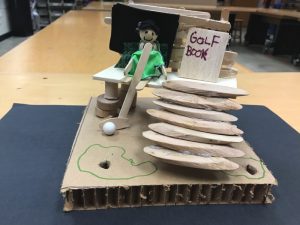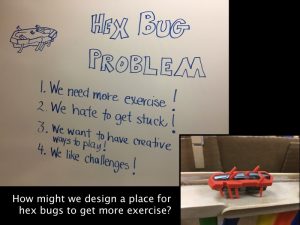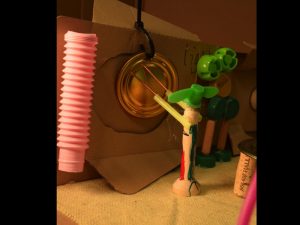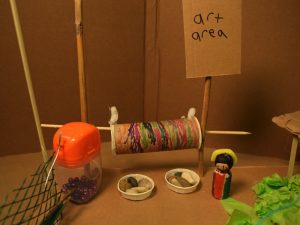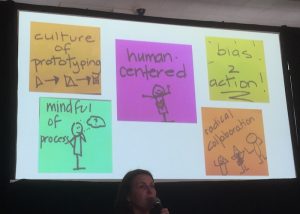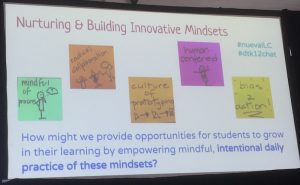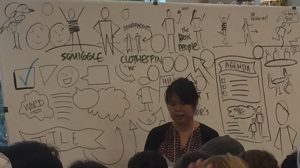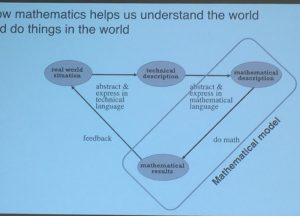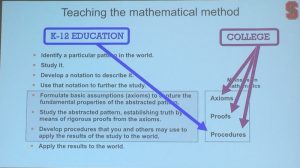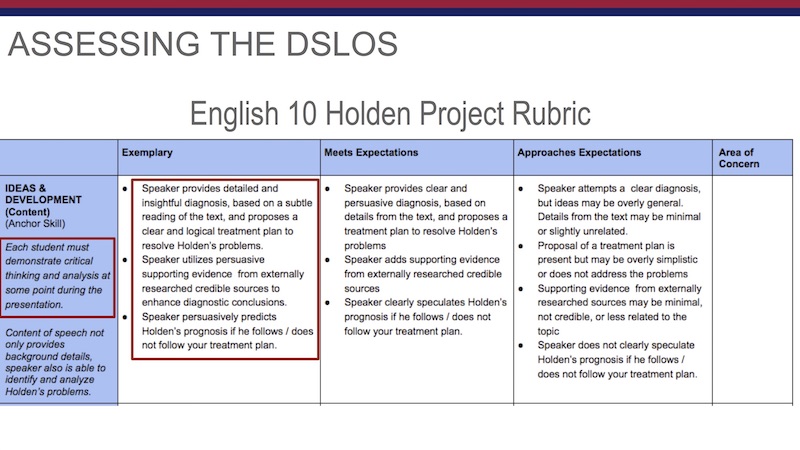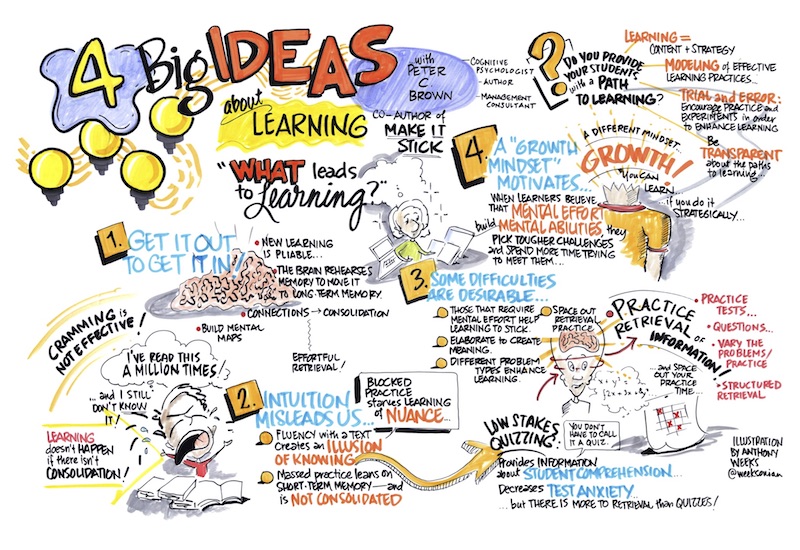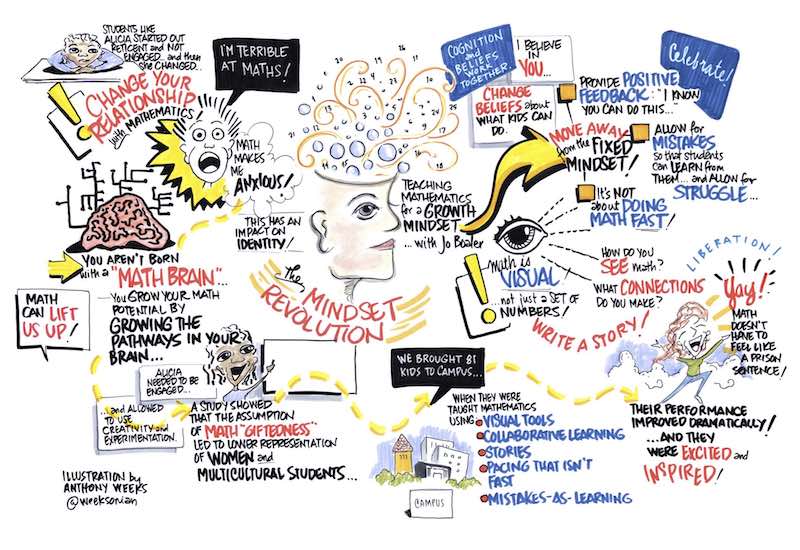TL-DR – Great conference on the latest thinking in education and how to prepare kids for the future.
Note – This recap is based on the talks I attended. I have also embedded some You Tube videos, pictures and links for more context on the talks.
Beautiful Questions
The conference kicked off with Warren Berger’s talk on Beautiful Questions. Questioning is the starting point of innovation and Berger talk about a 3 year old girl asking her dad – why she could not see the picture he had just taken of her. Her request led to the Polaroid Camera in 1948. Don’t stop with the why but ask How might we?
2016 Creativity Summit at Columbus Museum of Art
After that we went into breakout sessions. The area I focused was in Design Thinking. If you are unfamiliar with it, check out this article on Design Thinking.
A Glimpse at Design Thinking in Nueva’s Lower School
Michelle Grau and Emily Mitchell talked about how to Design Thinking process evolves from Kinder to 4th Grade and how the Innovation Lab play a role in it. The Kinder solved the need for a classmate with a broken leg and went to the multiple steps in the Design Think approach to come up with a solution.
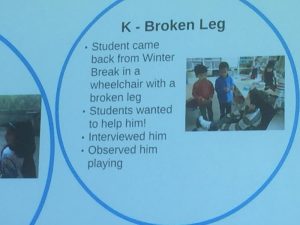 One of the key point here is to adapt Design Thinking to the student levels. The main goal is to help students find the real needs that they can solve the problem for before they rush into the brainstorming, prototyping and building phases. Prototypes should be low resolution and students should be encourage to iterate and not be welded to their initial solution.
One of the key point here is to adapt Design Thinking to the student levels. The main goal is to help students find the real needs that they can solve the problem for before they rush into the brainstorming, prototyping and building phases. Prototypes should be low resolution and students should be encourage to iterate and not be welded to their initial solution.
Design Thinking and the Reggio Approach
Lauri Jones and Julia Myrick talked about how mindsets and methodologies of Design Thinking and the Maker Movement intersect with the philosophy of the Reggio approach, and how can those connections support young innovators.
One of the exercises was to design a special bench for your family. The students had to interview their family members to find their needs and build a model that met the needs.
Another one was to design a place where HexBugs can get more exercise. The Hexbug is the user and kids need to develop an emotional connection to the hexbug. All feedback is from the Hexbug’s letters to the student.
One caution was to let the student develop their idea and not steer them. For an assignment for to design a new playground for 1st Graders, the kinder students interviewed the 1st Graders and built up personas. They came up with innovative ideas like Musical Wall and Cylindrical Easel.
At the end of the exercise, make sure that you keep the student honest by making sure all the user needs that were documented were met. And get the students to use – “I like, I wish, I wonder …” to collect constructive feedback. Follow Lauri on Twitter.
Empowering Quiet Leaders
Heidi Kasevich talked about setting the stage to listen to all voices including the quiet people to encourage everyone to cultivate the quiet leadership strengths of humility, perspective, and prudence.
Building Innovative Mindsets Workshop
Ellen Deutscher and Mary Cantwell talked about building a community of learners who embrace risk-taking, creative problem-solving, and collaboration and have a bias towards action. The workshop was fun and we paired up to do come up with secret handshakes, dance moves and war cries. We collaborated as a group to build towers with newspapers.
Friday
Visual Thinking Workshop for Educators
I reached late for this talk but Liang, Shepard, and Walker described the power of visual thinking. They had suggestions on how draw using alphabet people. Visuals allow a more complete view of the story to be told and increase memory retention. The growing popularity of animated hand-drawn type of explainer videos is a great example of this craft.
More details on Visual Thinking.
All The Mathematical Methods I Learned In My University Math Degree Became Obsolete In My Lifetime
Keith Devlin talked about using tools to solve math problems. While tools do most of the grunt work, you need to figure how enter the right equation or input to solve, which is a skill to be learnt. We used Mathematica to figure out how many people are great or terrible across multiple attributes.
Harnessing Digital Education
Neeru Khosla talked about her CK-12 online learning platform. One interesting concept was Flexbook – a text book that the teacher and student can modify. CK-12 can track how students are doing, so they know their progress as well as what they are missing.
It would be interesting to compare CK-12, Khan Academy and Summit Learning platform.
Assessing 21st Century Learning Skills
Jennifer Sparrow talked about measuring skills like Character, Collaboration, Communication, Creativity, Critical Thinking and Cultural Competency. She talked about rubrics like the English 10 Holden Project Rubric to assess these skills. Also, choosing the right type of assessment is critical to success.
The Confluence of Artificial Intelligence and Cognitive Science: Deep Learning in the Brain and Mind
Andrew Saxe talked about the similarities between how the brain learns and how Deep Neural Net learns. When thinks are learnt, the learning data causes a bias. If you supply the brain or a Neural Net with racist data, the result output will show racist behavior. Saxe touched upon what the future would look like and how would we prepare students where wage work is unnecessary.
Nueva ILC Recap with Visual Practitioners
The was a great Q&A session with the Visual Note taking practitioners that documented most of Friday’s sessions. One great point was – When you use a whiteboard to draw, the low fidelity of it invites collaboration, when you use a powerpoint, it is high fidelity and everything looks finished, which discourages comments and collaboration. Here are a sample of the what they documented from the various sessions.
Overall a great conference and was made extra wonderful by the volunteers eager to make sure the presenters and attendees experience was a great one. I highly recommend you attend the next one, if you are in the education field.
